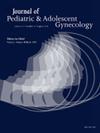Mother-Daughter Dyads’ Perceptions of Contraception
IF 1.7
4区 医学
Q3 OBSTETRICS & GYNECOLOGY
引用次数: 0
Abstract
Study Objective
In an increasing number of states, parents must provide permission for their daughters under 18-years-old to start contraception. We sought to understand perceptions among mother-daughter dyads about sources of information, and to describe dyadic interactions when discussing contraception.
Methods
Dyads were recruited from an adolescent medicine clinic in Dallas, TX. A semistructured joint interview was conducted with each dyad. Interviews were recorded, transcribed, and coded through an iterative approach.
Results
There were 11 dyadic interviews (22 participants). Sources of information about contraception included mothers, healthcare providers (HCPs), friends/family, school, and individualized learning. Dyads identified distinct purposes and limitations of each source. Mothers noted the importance of supporting their daughter's development and specific needs. Often these conversations began with a discussion of menstrual management. Information from friends/family was overwhelmingly anecdotal. Schools and HCPs were viewed as trusted sources, and the internet/social media as possibly inaccurate or misleading. Dyads described several risks and benefits of different methods. Minimal conflict was noted.
Conclusion
These results provide rich information about how mother-daughter dyads view contraception in joint discussion. It is important to ensure that accurate stories about contraception are accessible and teaching health literacy would be helpful. Menstrual management appears to be an acceptable starting point to discuss contraception. Schools and HCPs are trusted sources and measures should be taken to ensure teaching is accurate, developmentally appropriate and teaches evaluation of online information. Regardless of parental consent laws for adolescent contraception, engaging caregivers in the process can help support adolescent contraceptive decision-making.
母女二人组对避孕的看法。
研究目的:在越来越多的州,父母必须允许未满 18 岁的女儿开始避孕。我们试图了解母女二人组对信息来源的看法,并描述二人组在讨论避孕问题时的互动情况:方法:我们从德克萨斯州达拉斯市的一家青春期医学诊所招募了母女二人组。对每对母女进行了一次半结构化联合访谈。对访谈进行记录、转录,并通过迭代法进行编码:结果:共进行了 11 次双人访谈(22 名参与者)。避孕信息的来源包括母亲、医疗保健提供者(HCPs)、朋友/家人、学校和个性化学习。二元组确定了每种信息来源的不同目的和局限性。母亲们指出,支持女儿的发展和特殊需求非常重要。这些对话通常从讨论月经管理开始。来自朋友/家人的信息绝大多数是传闻。学校和保健医生被视为可信的信息来源,而互联网/社交媒体则可能不准确或具有误导性。各小组描述了不同方法的风险和益处。冲突极少:这些结果为母女二人在共同讨论中如何看待避孕提供了丰富的信息。重要的是要确保人们能够获得有关避孕的准确信息,而健康知识教育也会有所帮助。月经管理似乎是讨论避孕的一个可接受的起点。学校和保健医生是值得信赖的信息来源,应采取措施确保教学内容准确、适合发展需要,并教授如何评估在线信息。无论青少年避孕是否征得父母同意,让照顾者参与这一过程有助于支持青少年避孕决策。
本文章由计算机程序翻译,如有差异,请以英文原文为准。
求助全文
约1分钟内获得全文
求助全文
来源期刊
CiteScore
3.90
自引率
11.10%
发文量
251
审稿时长
57 days
期刊介绍:
Journal of Pediatric and Adolescent Gynecology includes all aspects of clinical and basic science research in pediatric and adolescent gynecology. The Journal draws on expertise from a variety of disciplines including pediatrics, obstetrics and gynecology, reproduction and gynecology, reproductive and pediatric endocrinology, genetics, and molecular biology.
The Journal of Pediatric and Adolescent Gynecology features original studies, review articles, book and literature reviews, letters to the editor, and communications in brief. It is an essential resource for the libraries of OB/GYN specialists, as well as pediatricians and primary care physicians.

 求助内容:
求助内容: 应助结果提醒方式:
应助结果提醒方式:


